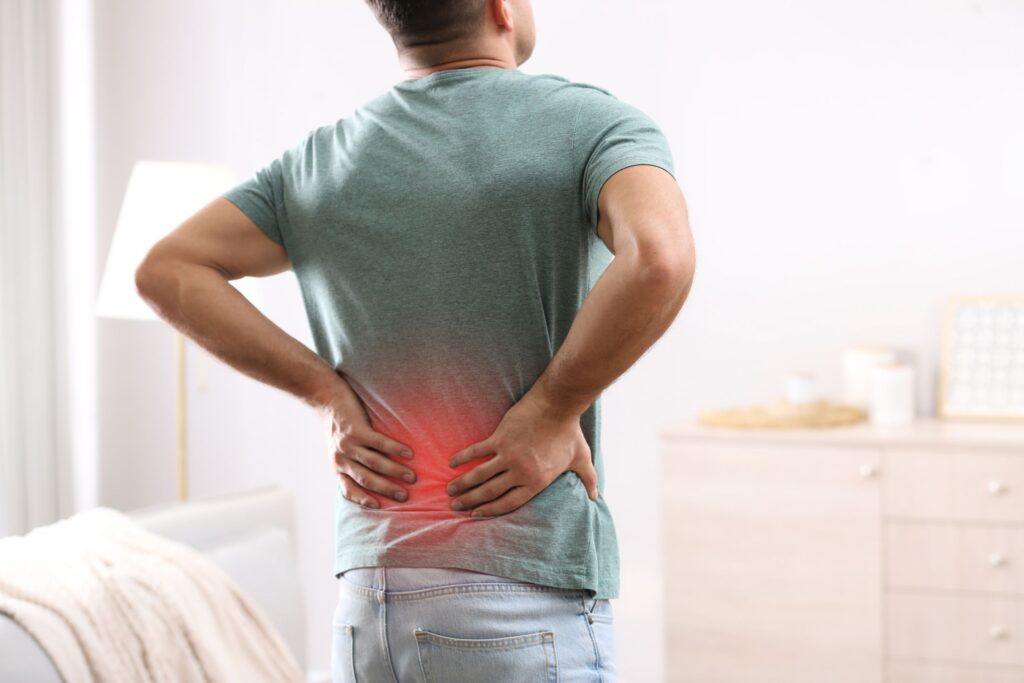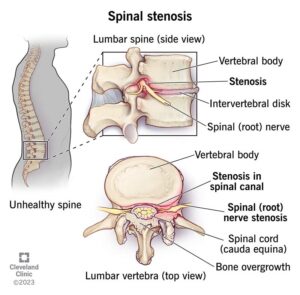What is Lumbar Spinal Stenosis?
Lumbar spinal stenosis is a common problem that affects many people as they age. It is most commonly caused by a type of wear and tear in the spine, more commonly referred to as degeneration or arthritis. Spinal stenosis is a narrowing of the open canals within your spine, which can put pressure on the spinal cord and nerves that exit through the spine. While the most common cause of spinal stenosis is wear and tear from the aging process, there are actually 5 different types of stenosis:
- Congenital – born with the condition (eg. short pedicles).
- Spondylolisthesis – shifting of the vertebrae with respect to one another.
- Iatrogenic – caused by medical intervention (eg. surgery).
- Metabolic Bone Disease – increased/decreased bone formation.
- Acquired – degenerative changes to the spine due to aging process.
Symptoms of Spinal Stenosis?
Some patients might experience symptoms such as pain, numbness and/or weakness in their buttocks and legs with lumbar spinal stenosis. This is referred to as neurogenic claudication. Neurogenic claudication is a common symptom of lumbar spinal stenosis, causing impingement or inflammation of the nerves emanating from the spinal cord. Neurogenic means that the problem originates at the nerve, and claudication, from the Latin for limp, because people may feel painful cramping and/or weakness in the legs.
The most common symptoms that patients experience with lumbar spinal stenosis are:
- Little or no pain while sitting.
- Leg or buttock pain on both sides while walking/standing.
- Symptoms increase the longer you walk/stand.
- Symptoms increase while arching your back or standing upright.
- Symptoms are relieved by leaning forwards (like using a walker or leaning on a grocery cart while shopping), sitting and lying down.
- Problems with weakness and balance in the legs while walking.
- Possible urinary problems.
- You do not necessarily need to experience pain in your lower back with lumbar spinal stenosis.
While treatment options for lumbar spinal stenosis can vary depending upon type/severity of the stenosis, clinical presentation and overall health of the individual, the most common treatments can include pain/anti-inflammatory medication, physical therapy, structured exercise, spinal injections and surgical stabilization.
Spinal Stenosis Program at Runway Health
This program was developed by Dr. Carlo Ammendolia DC, PhD and his team at Mt. Sinai Hospital. Through his team’s research, they were able to develop a non-surgical program to effectively manage lumbar spinal stenosis. Our program at Runway Health stays true to the research and goals of the program developed at Mt. Sinai.
- Provide a standardized, comprehensive, research-based model for managing lumbar spinal stenosis.
- Provide manual therapy techniques, strength training and postural re-education to patients.
- Educate patients about their condition, and how to effectively manage their symptoms through a continuing home-based exercise program.
- Goal setting, positive reinforcement and a graded increase in activities.
- Improved standing tolerances, walking tolerances and functional abilities during daily activities.
Author:
Dr. Michael Lehr DC, Dip. Ac., Hons. BSc.

